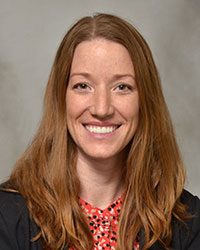Movement Disorder Subspecialty
Movement – even simple movement – is a result of complex coordination between the brain and muscles by means of signals transmitted through nerves in the spinal cord. A movement disorder is a neurological condition that interferes with this intricate process, to the point it affects the speed, flow or ease of movement. A person with a movement disorder may exhibit movement that is excessive, involuntary, slowed or completely absent.
Movement disorders encompass a broad range of conditions. Causes range from injury to autoimmune disease, inherited conditions, infection or certain medications. In general, most disorders begin slowly and become progressively worse.
Some of the more common movement disorders include:
- Dystonia
- Essential tremor
- Huntington’s disease
- Parkinson’s disease
- Restless leg syndrome
- Tourette’s syndrome.
- Tic disorder
Signs of a movement disorder vary and can include tremors, stiffness, trouble sleeping, and changes in voice and sense of smell. Treatment and outcomes also vary, with some disorders responding to medicine, and others improving when an underlying cause is found and treated. Sometimes there is no cure for the disorder. In those instances, the objective is to minimize symptoms and reduce pain.
Parkinson's Disease
Parkinson's is a disease of the central nervous system. It is progressive, which means that symptoms get worse over time. The cause of Parkinson's disease is unknown. Parkinson's gradually causes certain nerve cells in the brain to break down and die. The loss of nerve cells that produce a chemical messenger called dopamine causes many of the symptoms.
Many people with Parkinson’s have movement symptoms, also called motor symptoms. Movement symptoms can make everyday life challenging – walking, writing, drinking from a glass.
Common movement symptoms are:
- Tremor — Tremor or shaking is often the most obvious symptom of Parkinson's, though not everyone has it. Tremor usually starts in the fingers, hand, or foot and may eventually spread to the rest of your limb. It may affect one or both sides of the body. Unlike the condition called essential tremor, a Parkinson's tremor usually happens when the part of the body is at rest, instead of when you're moving it.
- Slowed movement (bradykinesia) — Parkinson's may slow your movements. When you walk, you may have to take short steps or shuffle your feet. Over time, you may have freezing — sometimes your feet may seem to stick to the floor, or you may have trouble getting up from a chair.
- Stiffness (rigidity) — Muscles may become very stiff and difficult to move. This often begins in the legs and neck.
Parkinson's disease may also affect mood, sleep, digestion (constipation is common), speech, swallowing, thinking, and memory.
Tell your doctor how your symptoms are changing, so that you can make changes in your treatment at the right time.
Treatment Options
Your doctor will determine what treatment options are right for your individual situation. These may include medications, surgical treatments, exercise, stretches, and balance work.
Medications
Types of medications include:
- Dopaminergic drugs (include levodopa) — Have dopamine-like effects
- Decarboxylase inhibitor (include carbidopa) — Work with levodopa to treat symptoms
- Dopamine agonists — Mimic dopamine
- Anticholinergics — Relax smooth muscle to treat tremor
- MAO-B inhibitors — Help prevent the breakdown of dopamine in the brain
- Catechol-O-methyltransferase inhibitors — Bind to dopamine receptors and imitate dopamine
Surgical Options
Although older types of surgery are still performed in some cases (such as pallidotomy and thalamotomy), the primary surgical option used currently is deep brain stimulation (DBS).
Subspecialists in Movement Disorders
Additional Resources
American Parkinson Disease Association (keyword: DBS)
Parkinson's Foundation
Michael J. Fox Foundation for Parkinson's Research
Parkinson Alliance
Davis Phinney Foundation for Parkinson's
